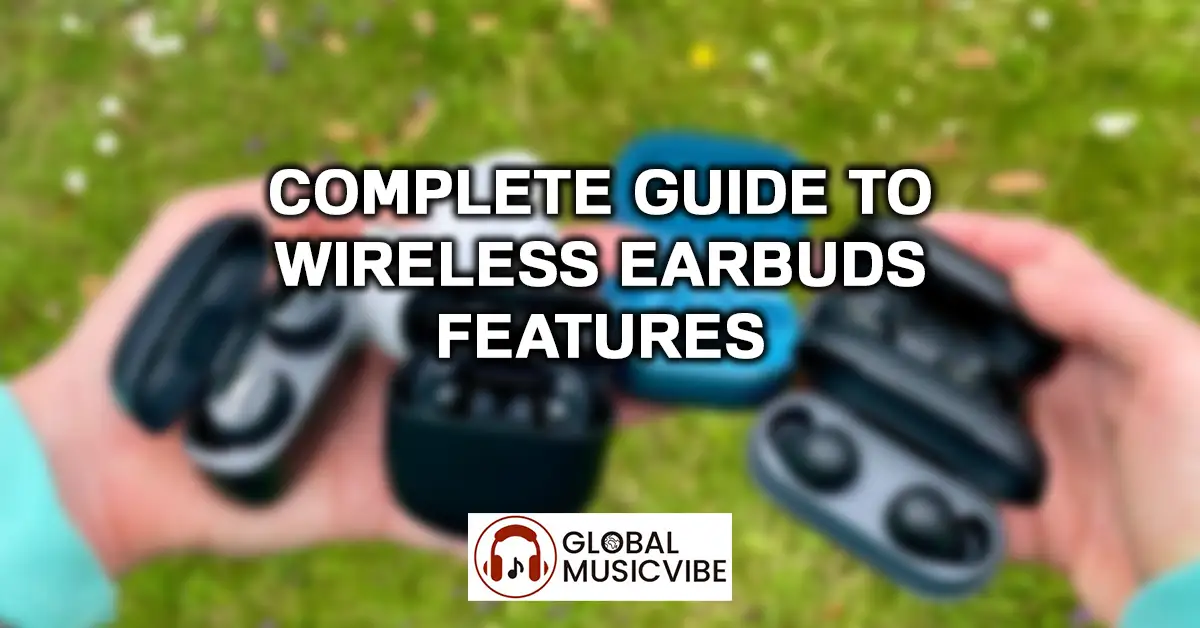Wireless earbuds features have revolutionized personal audio technology, transforming from simple Bluetooth accessories into sophisticated smart wearables. With advanced features such as active noise canceling (ANC), seamless device integration, and AI-enhanced sound customization, today’s wireless earbuds are more than just audio devices—they’re smart wearables that complement our daily lives. Whether you’re an audiophile seeking premium sound quality, a fitness enthusiast requiring sweat-resistant durability, or a busy professional needing crystal-clear call quality, understanding the essential features of wireless earbuds is crucial for making an informed purchase decision.
The modern wireless earbuds market offers an unprecedented range of options, from budget-friendly models starting at $50 to premium flagship devices exceeding $400. Each price point brings different combinations of features, making it essential to understand which capabilities matter most for your specific needs and lifestyle.
Active Noise Cancellation Technology
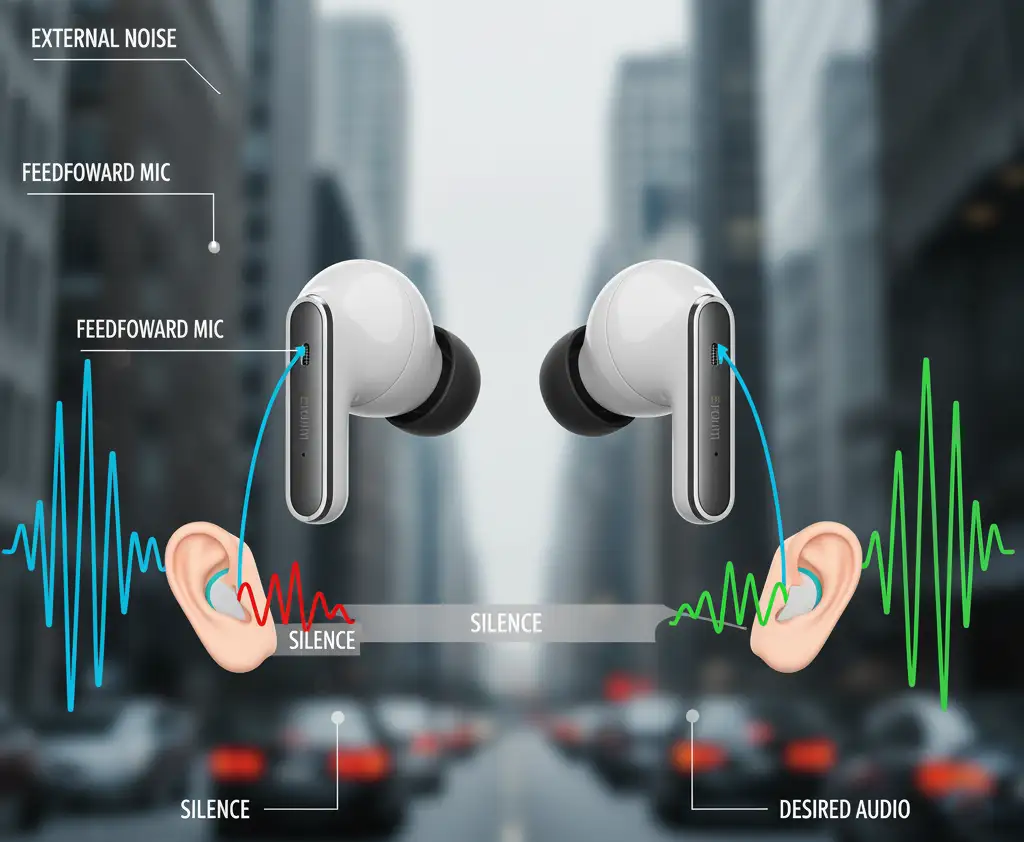
Active Noise Cancellation stands as one of the most sought-after wireless earbuds features in 2025. ANC uses advanced circuitry and microphones to pick up noise signals and create inverse waves that cancel out these sonic disruptions, whereas passive noise cancellation physically isolates high-pitched sounds through the headphone design and materials.
The latest generation of ANC technology has reached impressive new heights. Apple’s AirPods Pro 3 deliver the world’s best in-ear Active Noise Cancellation, removing up to 2x more noise than the previous-generation AirPods Pro, and 4x more than the original AirPods Pro. Meanwhile, Sony WF-1000XM5 earbuds reduce the loudness of external noise by an average of 87%, equipped with two new processors: the Integrated Processor V2 and the HD Noise Canceling Processor QN2e to improve ANC performance.
The Technics EAH-AZ100 are considered among the best noise cancelling earbuds available, with their superb ANC attenuating noise across the audible frequency spectrum. These advanced ANC systems work particularly well for consistent, low-frequency sounds like airplane engines, air conditioning units, and traffic noise.
Modern ANC implementations also include adaptive features that automatically adjust noise cancellation levels based on your environment. This intelligent adaptation ensures optimal performance whether you’re in a quiet library or a bustling city street.
Sound Quality and Audio Codecs
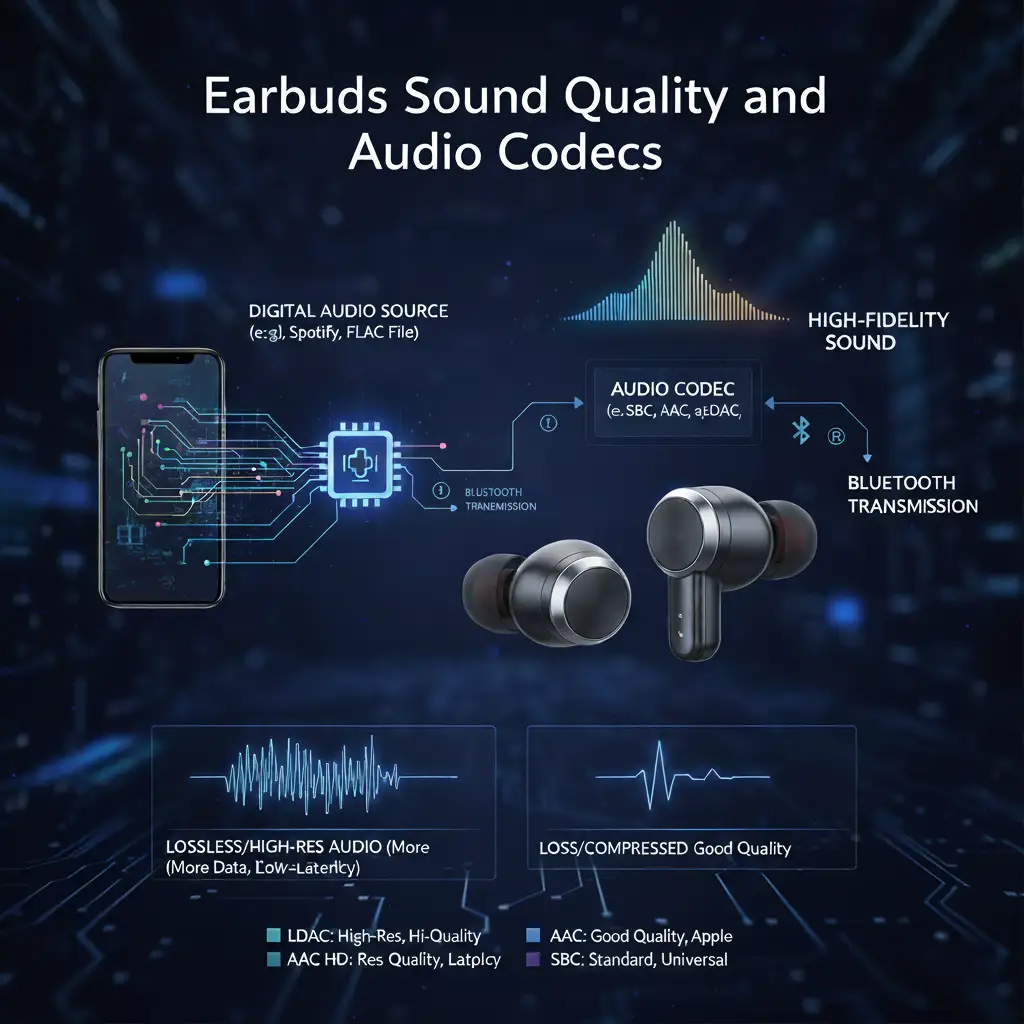
Sound quality remains the cornerstone of any quality audio device, and wireless earbuds have made significant strides in this area. Premium earbuds now deliver rich, balanced frequencies, clear instrument separation, and lifelike vocals that don’t muddy at higher volumes.
The support for advanced audio codecs plays a crucial role in wireless sound quality. Many wireless earbuds manufacturers use codecs such as aptX HD and LDAC to increase the quality when using compatible sources, utilizing extra bandwidth to beam higher-quality, less compressed music files. Sony’s buds support LDAC codec for high-res audio wireless, a rarity among earbuds.
The emergence of MEMS (Micro-Electro-Mechanical Systems) drivers represents a significant advancement, with products like the Creative Aurvana Ace 2 demonstrating promising results as full-range MEMS drivers replace traditional balanced armature and dynamic drivers.
Spatial audio technology has also become a standard feature in premium models. AirPods Pro 3 feature a new multiport acoustic architecture that precisely controls the airflow that carries sound into the ear, helping deliver an exceptional spatial listening experience.
Battery Life and Charging Features
Battery performance has dramatically improved across all price segments of wireless earbuds. Noise-canceling wireless earbuds are usually rated for 4.5 to 8 hours, but with included charging cases the total possible playback time might be much more competitive.
The longest-lasting earbuds available include models like Audio-Technica’s ATH-CKS5TW, with the company stating they last 15 hours, though the app showed 40 percent remaining at that mark during testing. AirPods Pro 3 now provide up to eight hours of music playbook with ANC enabled — a 33 percent increase over the previous generation.
Charging convenience has evolved significantly with multiple options:
Wireless Charging: Wireless charging for earbud cases is prevalent in mid/high-end models – drop the case on a Qi charger and you’re topped up, with Apple, Samsung, Google, and Sennheiser all supporting this feature.
Fast Charging: Some models like OnePlus Buds Pro 2 and Anker boast fast-charge that gives hours of use from just 10 minutes plugged in.
USB-C Adoption: By 2025’s end, USB-C has basically taken over as the port of choice, with even Apple shifting AirPods and Beats to USB-C, ahead of EU regulations.
Water and Sweat Resistance
Water resistance has become a standard feature across most wireless earbuds categories. Look for an IP rating (e.g., IPX4, IPX7) that indicates the level of water and sweat resistance if you plan to use your earbuds during workouts or in humid conditions.
AirPods Pro 3 feature enhanced durability with IP57 rating during activities like running, HIIT, yoga, and more. With an IP54 rating for dust and sweat resistance, premium models stay secure during workouts, even when sweaty.
The different IP ratings indicate varying levels of protection:
- IPX4: Protection against water splashes from any direction
- IPX5: Protection against water jets from any direction
- IPX7: Protection against temporary immersion in water
- IP57: Protection against dust and temporary water immersion
For fitness enthusiasts, comparing earbuds with appropriate water resistance ratings is essential for finding models that can withstand intense workout sessions.
Connectivity and Multipoint Pairing
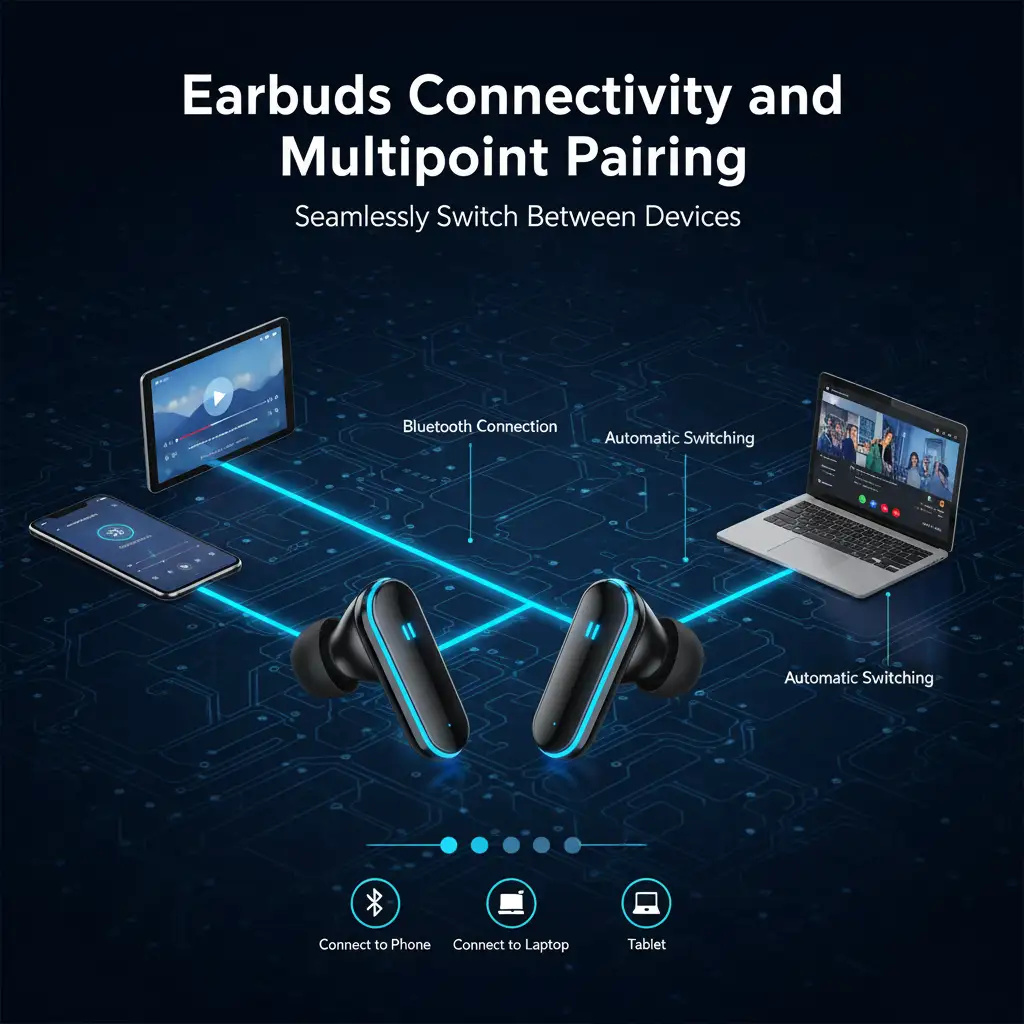
Bluetooth connectivity has evolved significantly, with most modern earbuds supporting Bluetooth 5.0 or higher for improved stability and reduced latency. As long as your phone has Bluetooth, then in theory you should be able to use any pair of wireless earbuds with it, though some manufacturers include extra features that only work if your phone and earbuds are from the same brand.
Multipoint connectivity has become increasingly common, allowing users to connect to multiple devices simultaneously. Premium models offer multipoint pairing, allowing seamless switching between devices without the need to manually disconnect and reconnect.
Bluetooth LE Audio and Auracast technology are approaching the market, allowing users to grab audio feeds from their surroundings directly, meaning you don’t have to worry about missing important announcements, and you can also change the languages of your feed in some instances.
Comfort and Fit Technology
Proper fit remains crucial for both sound quality and comfort during extended use. Sony made the WF-1000XM5 its most comfortable earbuds by shrinking them and including XS-L memory foam ear tips. The updated design helps AirPods Pro 3 fit even better and provides greater in-ear stability during activities.
A recent consumer survey shows that 64% of users focus on the comfort and fit of the device, highlighting the need to address these preferences in future designs. Premium earbuds now include multiple ear tip sizes and materials, with some offering memory foam tips for superior comfort and noise isolation.
Many manufacturers now include fit testing within their companion apps to help users achieve optimal seal and comfort. Features such as a fit test for optimal ANC effectiveness ensure users get the best possible performance from their earbuds.
Smart Features and AI Integration
Modern wireless earbuds incorporate increasingly sophisticated smart features. AirPods Pro 3 include heart rate sensing during workouts, Live Translation enabled by Apple Intelligence, and automatic Conversation Boost adding powerful amplification with background noise reduction in loud environments.
Voice assistant integration has become standard, with most earbuds supporting Siri, Google Assistant, or Alexa activation. Touch controls and gesture recognition allow users to manage playbook, calls, and settings without reaching for their phone.
By 2025, wireless headphones and wireless earbuds will become intrinsically linked with smart devices ensuring a seamless transition between devices and a more accessible user experience.
Health and Fitness Features
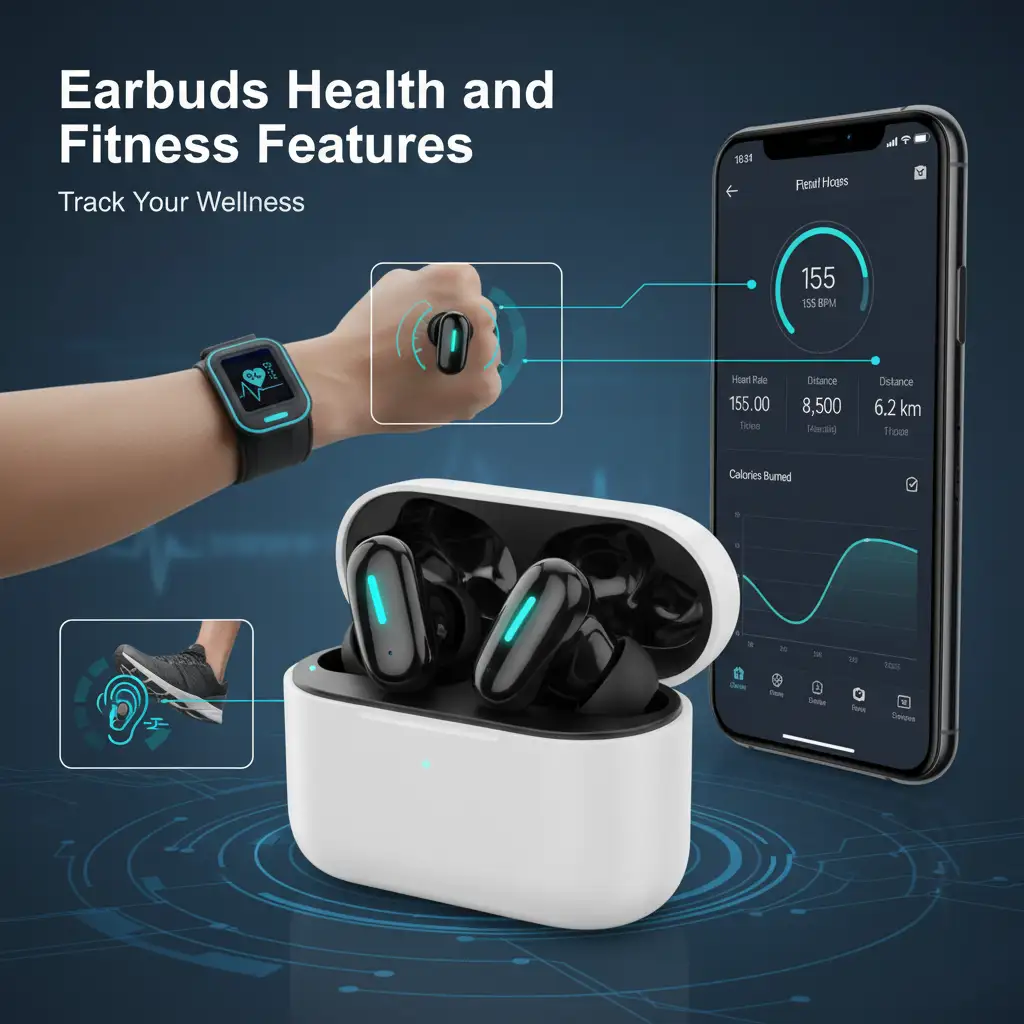
The integration of health monitoring capabilities represents a growing trend in wireless earbuds features. During workouts, AirPods Pro 3 users can measure their heart rate and track workouts with a new experience in the Fitness app on iPhone.
Some models come packed with features including head-tracked spatial audio, excellent battery life and a built-in heart rate monitor – which has proven to be both accurate and genuinely useful. These health features make wireless earbuds increasingly attractive to fitness enthusiasts who want to minimize the number of devices they need to carry.
Beyond heart rate monitoring, some earbuds are exploring additional biometric capabilities, including body temperature sensing and even blood oxygen level monitoring in future iterations.
Call Quality and Microphone Technology
Professional-grade call quality has become essential as remote work continues to grow. Premium models offer the clearest call quality of any wireless earbuds tested, making them a reliable choice for staying in touch, even in noisy environments.
Advanced models feature six beamforming microphones for crystal clear call quality for work and social life. These sophisticated microphone arrays use advanced algorithms to isolate your voice while suppressing background noise.
Some premium pairs even have special technology that helps to emphasise voices so your voice should come through even clearer. This makes them ideal for professionals who rely on clear communication throughout their workday.
Transparency and Ambient Modes
Transparency mode allows users to stay aware of their surroundings without removing their earbuds. A natural-sounding transparency mode lets you chat without removing the earbuds, providing added convenience and safety.
The transparency mode works well when you need to stay aware of your surroundings, whether for safety during outdoor activities or quick conversations. Advanced implementations can automatically adjust transparency levels based on the situation or user preferences.
Customization and App Features
Companion smartphone apps have become essential for maximizing the potential of wireless earbuds. Users can create their own sound profiles through dedicated apps for iOS and Android, as well as take advantage of high-resolution audio formats on compatible Android phones.
Premium apps offer features such as 5-band equalizers, firmware updates, and comprehensive customization options for touch controls and ANC settings. These apps also provide battery monitoring, device location services, and personalized sound optimization.
When comparing headphones and earbuds, the quality and features of the companion app can significantly impact the overall user experience.
Gaming and Low Latency Features
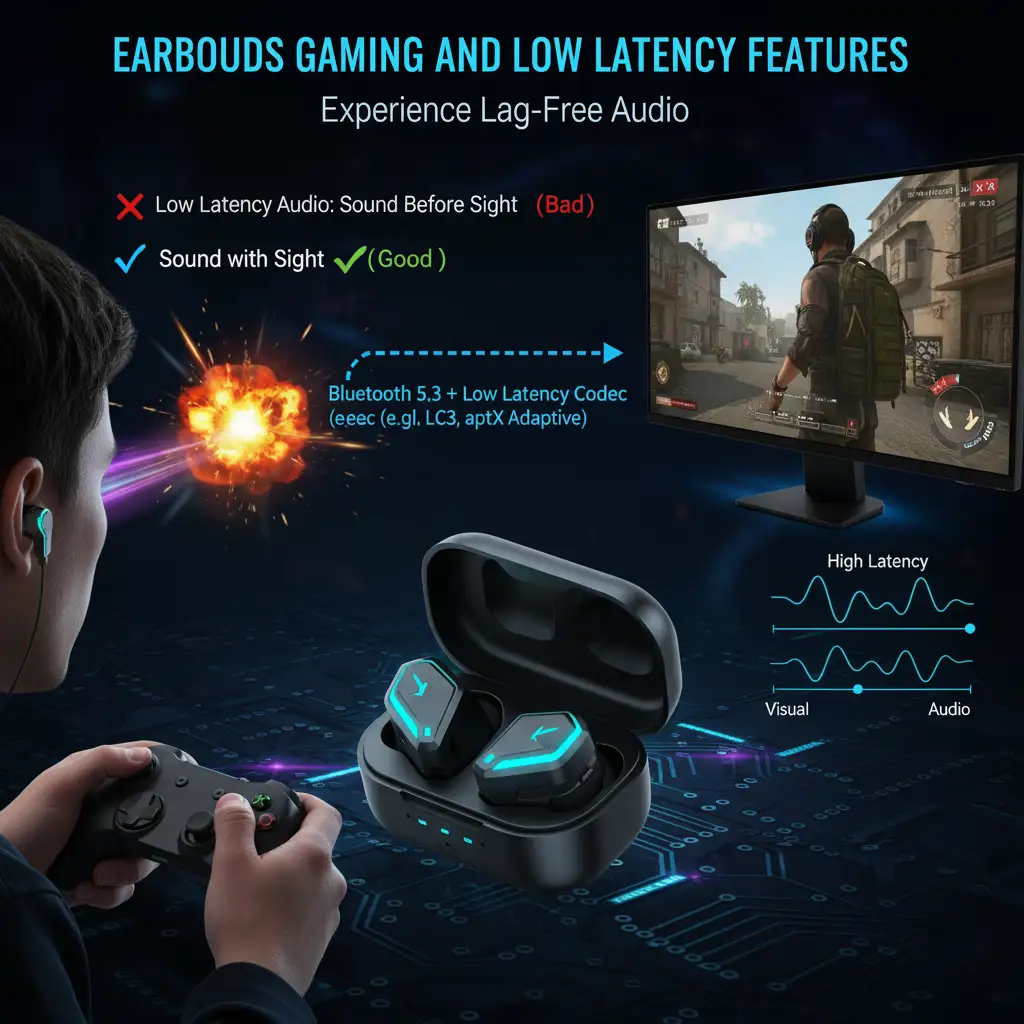
Gaming performance has become increasingly important as mobile gaming grows in popularity. PlayStation 5 doesn’t support Bluetooth audio without an adapter or dongle, but universal options allow you to use any headphones, headset or earbuds with gaming consoles.
Low-latency modes and gaming-specific features help minimize audio delay, ensuring synchronized audio during gaming sessions and video consumption. Some earbuds now include dedicated gaming modes that prioritize latency reduction over audio quality for competitive gaming scenarios.
Future Technologies and Trends
Looking towards 2025, the expected design and functionality advancements of wireless headphones and wireless earbuds are poised to take user experiences to a whole new level, with AR and gesture control technology predicted to reshape audio interaction with users.
Earbuds are expanding their roles, with some models taking over duties traditionally handled by hearing aids, using earbuds you may already own as hearing assistive devices. This represents a significant opportunity to help more people with hearing assistance while reducing costs and increasing accessibility.
The integration of artificial intelligence continues to advance, with future earbuds expected to offer more sophisticated environmental adaptation, personalized sound profiles, and predictive features based on user behavior patterns.
Choosing the Right Features for Your Needs
A good pair of wireless earbuds typically costs between $100 and $400, with this range including options with high-quality sound, reliable connectivity, and additional features like noise cancelation and water resistance. While there are cheaper alternatives available, they might compromise on sound quality, battery life, or durability.
Consider prioritizing features based on your primary use cases:
For Commuters: Focus on ANC performance, battery life, and comfort for extended wear For Fitness Enthusiasts: Prioritize water resistance, secure fit, and heart rate monitoring
For Professionals: Emphasize call quality, multipoint connectivity, and transparency modes For Audiophiles: Look for advanced codec support, high-quality drivers, and comprehensive EQ options For Budget-Conscious Users: Seek models that offer the best balance of essential features without premium pricing
When exploring your options, checking out various songs can help you evaluate the sound quality and performance of different earbud models across various music genres.
Frequently Asked Questions
What is the difference between active and passive noise cancellation?
Active noise cancellation uses electronic circuitry and microphones to detect external sounds and generate inverse sound waves to cancel them out, while passive noise cancellation relies on the physical design and materials of the earbuds to block sound from entering your ears.
How long do wireless earbuds typically last?
Most wireless earbuds generally do not last more than three or four years, primarily due to battery degradation. Over time, these batteries lose their ability to hold a charge, leading to reduced playback time and eventually making the earbuds unusable.
Do I need special features for working out?
Yes, for fitness use, look for earbuds with IPX4 or higher water resistance ratings, secure fit designs with ear hooks or wings, and features like heart rate monitoring. Some models are specifically designed for sports with enhanced stability and sweat resistance.
Can wireless earbuds work with any device?
Most wireless earbuds work with any Bluetooth-enabled device, but some features may be limited when used with devices from different manufacturers. For the best experience, pairing earbuds with devices from the same ecosystem often provides additional features and seamless integration.
What’s the importance of audio codecs?
Audio codecs determine the quality of wireless audio transmission. Higher-quality codecs like LDAC, aptX HD, and LC3 can deliver better sound quality by reducing compression and supporting higher data rates, though both your source device and earbuds must support the same codec to benefit from these improvements.

